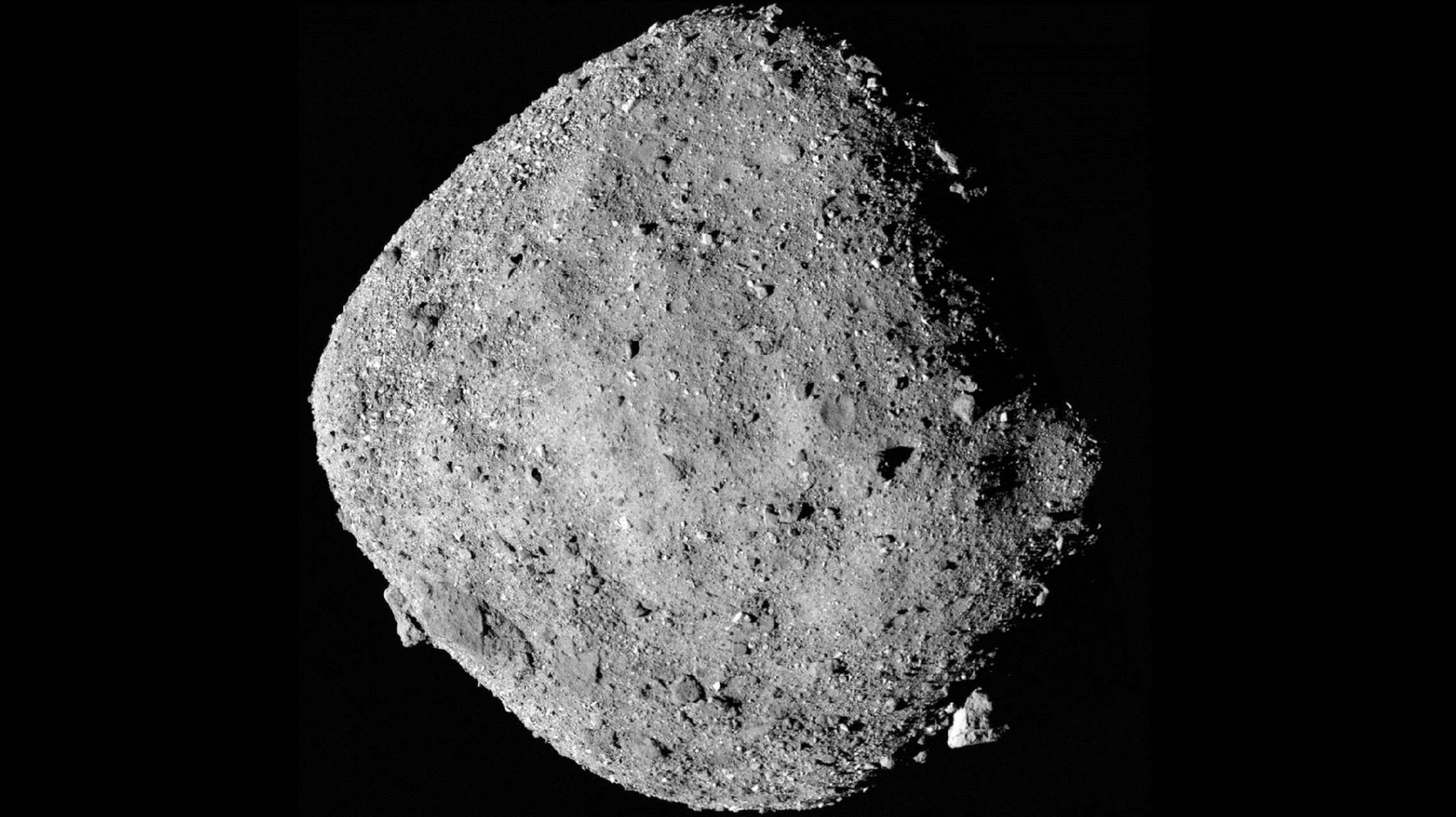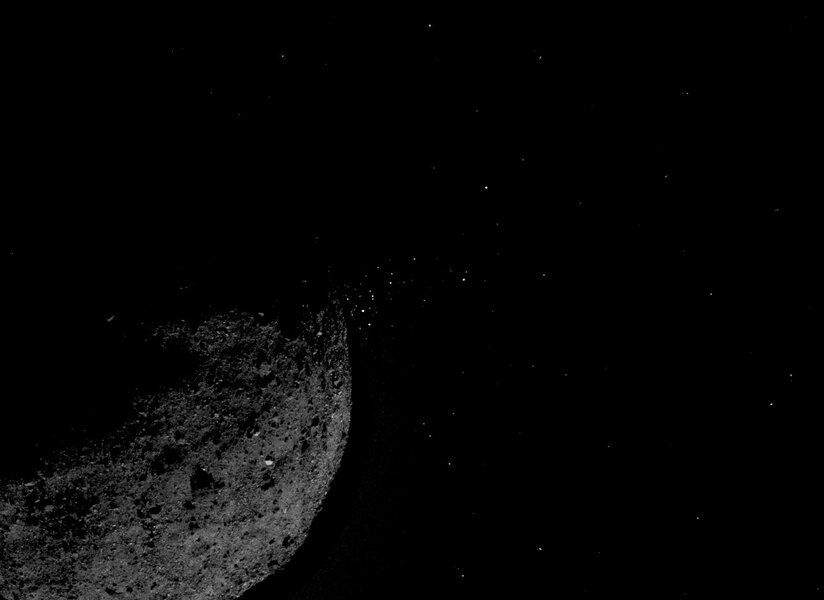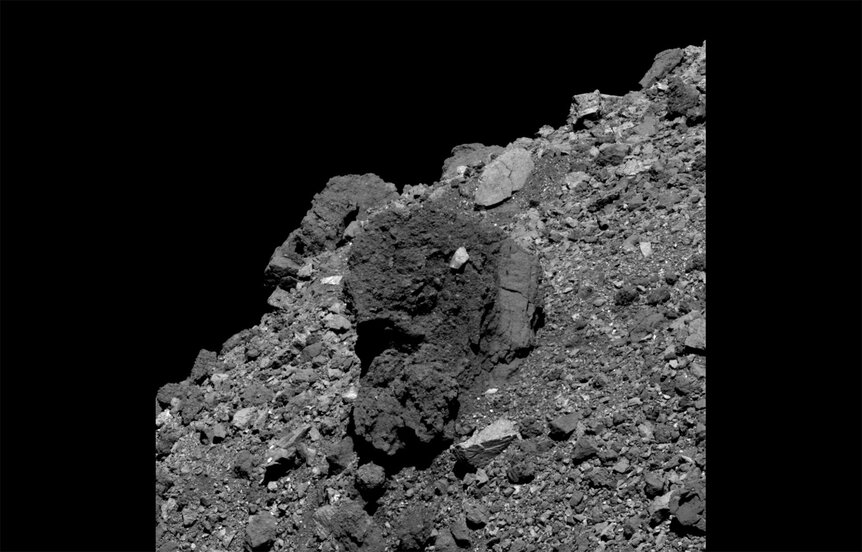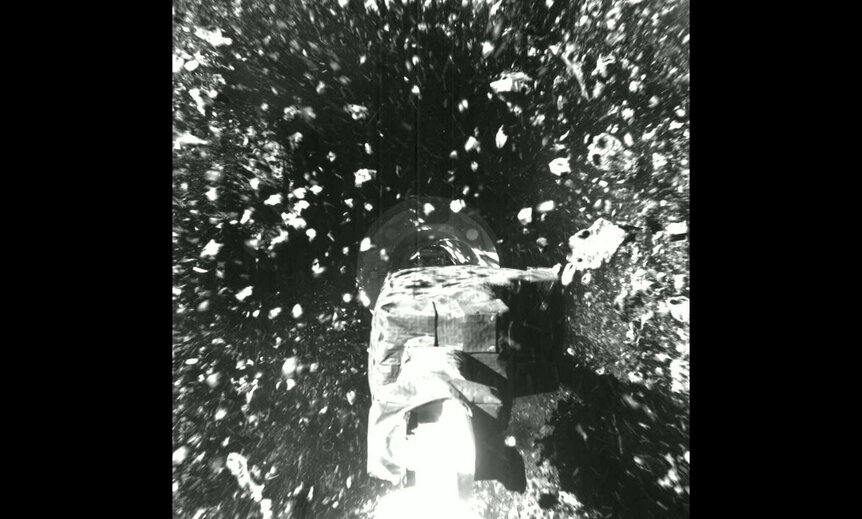Create a free profile to get unlimited access to exclusive videos, sweepstakes, and more!
Electrostatic repulsion may be lofting small rocks off the asteroid Bennu
The tiny asteroid is spitting rocks into space.

Why is Bennu spitting rocks into space?
This is one of the weirdest things it does, and that’s saying something. Bennu is a small asteroid, only a little over 500 meters wide. It’s shaped like two cones stuck together base-to-base. It’s not a solid rock but is instead a rubble pile, like a bag of rocks held together by gravity. It has one huge boulder sticking out 22 meters high called Benben Saxum.
And, also, well, it’s spitting rocks out into space.
Bennu is a near-Earth asteroid, moving around the Sun on a mildly elliptical orbit about the same size as Earth’s orbit. It can get as close as half a million kilometers to us, so it’s classified as a Potentially Hazardous Object, though at least for the next three centuries it won’t get close enough to us to be a real threat. Still, we want to know more about these rocks that could potentially hit us and ruin our day, so NASA sent the OSIRIS-REx mission there to map Bennu and eventually return samples to Earth for scientists to study.
One of the many discoveries from that mission is that Bennu is, somehow, shooting small rocks from its surface into space. That was one of the biggest surprises from the mission, and it’s not clear how this is happening. One likely cause is small micrometeorite impacts hitting the surface and blasting away shrapnel. Another is thermal stress: The day/night cycle as Bennu spins makes the rocks on the surface expand and contract as they enter and leave sunlight, which eventually cracks them. This can fling small bits away.
The sizes of these spitballs seen went from very small up to about 10 centimeters across. The gravity on Bennu is hardly more than a whisper, just a few millionths of Earth’s, but if you can reach back to the dim memories of high school science you might recall the van der Waals force, where some closely packed molecules attract or repel each other due to their electron clouds. This force is weak but in an asteroid whose surface is made up of jagged rocks it can help be a cohesive force holding the asteroid together. This too has to be overcome, and launching a rock the size of your fist away at speeds of a few centimeters to a few meters per second takes some effort, so it’s impressive Bennu can muster that kind of oomph.
But is that the only way rocks are ejected? Just because we can think of two that cover most of the bases doesn’t mean they cover all of them. So a team of scientists looked into another possible launching mechanism: Electrostatic charge [link to paper].
Ultraviolet light from the Sun packs quite a punch, and when a UV photon hits the surface of Bennu it can flick away an electron from an atom there. As more hit and more electrons are lost the rocks gain a positive charge. If enough charge builds up, a rock can feel a force repelling it from its fellow rocks, and that could be enough to overcome the meager gravity and launch it into space.
The Sun also blows a wind of charged subatomic particles, and this solar wind can also hit the surface and build up a static charge, and in the end can also launch bits of rock into space. It’s the cosmic equivalent of rubbing a balloon on your hair and sticking it to a wall, though in that case you get an attractive force instead of a repelling one, but it’s the same physics.
This electrostatic charge buildup is almost certainly happening on Bennu, but what the scientists investigated is the possibility that it actually is strong enough to spit rocks away. What they found is that it can, but the force is pretty small so it only works if the rock is small enough; assuming no van der Waals cohesion rocks up to roughly a centimeter in size can be flung away. So this is likely not the reason we see the bigger ones ejected, but it could ping away smaller ones.
Interestingly, some of the rocks seen ejected were on the night side of Bennu. Sunlight can’t explain those at all, obviously, but the solar wind still could. As the particles blow past Bennu it blocks them on the day side, leaving a shadow behind it, a hole, like if you were to stand downwind of a building to get out of the wind. This is called a plasma wake, and the physics is pretty fierce but the magnetic field of the wind can still connect to the surface on the lee side of the asteroid, allowing particles to hit there. However, modeling this, the scientists found the force is far weaker, too weak to explain the rocks launched away during local night on Bennu.
So it looks like electrostatic charging is at best a minor force at work here, but this is still valuable research. For one, it can still work on the smallest bits and probably is very good at lofting dust off the surface. Also, the electrostatic cohesive properties of rubble pile asteroids isn’t well known, so a study like this is a good step in figuring that out.
There will be a time in the future when a small bag of rocks like Bennu is aimed right at us, and we have to do something about it so it doesn’t hit. In that case the more we know about it, especially the forces holding it together, the better. We probably wouldn’t want to blow it up but instead push it aside, but even then we need to understand its structure to be able to do that.
It’s not every day that astronomy can literally save the world, but that day will come.





























